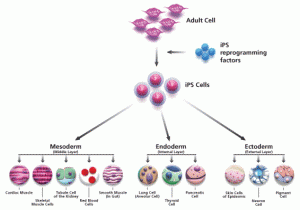Dr. Shangqin Guo, Assistant Professor of Cell Biology, has discovered that faster cell cycles are related to higher rates of reprogramming efficiency. “Nonstochastic Reprogramming from a Privileged Cell State,” published in the January 30, 2014 issue of Cell, offers new insight into the role of the cell cycle in reprogramming. “We saw that first of all, there are cells that can produce progeny that are all changing into [induced pluripotent stem] cells,” she explained. “And second of all, these cells have a characteristic cell cycle speed in that they divide very rapidly.”
Guo’s findings build upon the work of Nobel Prize-winning researcher Shinya Yamanaka. In a 2006 landmark paper, Dr. Yamanaka tested 24 embryonic stem cell transcription factors, and found that four of these induced pluripotency. With these factors, he successfully changed somatic cells, which are specialized adult cells, into pluripotent stem cells, which have the potential to differentiate into many types of cells in the body. “The reprogramming process is like taking a very established doctor or lawyer and completely wiping out their professional knowledge,” said Guo. “Now they are as bland as a child, and are open to all career options.”
Although this simple method of reprogramming challenged the established framework of cell biology, it raised more questions than it answered. Yamanaka produced pluripotent cells at a very low rate and at long intervals. This transformation of cell type is depicted as a random, or stochastic, event.
According to Guo, “If you introduced the four factors into 1000 cells and waited for two weeks, only one would change, if you were lucky. In that sense the process is stochastic.” Over the past few years, stem cell scientists have sought to understand the mechanisms underlying this “fate reversal” and to improve upon Yamanaka’s results with higher efficiency.
Working with colleagues at the Yale School of Medicine, Guo set out to analyze the ‘privileged’ somatic cells, those that exist after the stochastic event. The researchers used high resolution imaging techniques to ensure the existence of these cells in a subpopulation of bone marrow cells that ordinarily would become white blood cells, called granulocyte monocyte progenitors (GMPs). Then, they introduced Yamanaka factors (reprogramming factors named after Shinya Yamanaka) and imaged the cells for five days. Their findings were astonishing: the cells reprogrammed to pluripotency at a tremendous rate.
The privileged GMPs were unusual in another regard — their cell cycle, the time between consecutive cell divisions, was much faster than that of an average mammalian cell. Guo wrote that “privileged GMPs are associated with an ultrafast initial cell cycle” of about eight hours.
In order to investigate the effects that speeding up a cell’s cycle would have on its reprogramming efficiency, Guo studied lineage-negative-Kit Sca double positive (LKS) cells, known for their slow cell cycles and low efficiency rates. By culturing the LKS cells in growth factors, they accelerated the cells’ cycles, and after just five days, these activated cells exhibited higher reprogramming efficiency than the GMPs. This finding signals a direct correlation between speed of cell cycle and reprogramming efficiency. The results have left biologists wondering which other cells can react similarly and be utilized experimentally.
Finally, Guo’s team induced an ultrafast-cycling cell population into mouse embryonic fibroblasts with Yamanaka factors. In so doing, the researchers demonstrated that ‘privilege’ is not just innate, but can instead be artificially induced.
However, it is unclear how closely cellular reprogramming resembles returning an organism to a state of youth. Guo explained, “This is a complex question, which our current work does not address. Maybe reprogramming is like unfolding an origami crane so that the paper can be folded into something else. Is this paper as good as new?
“There is this notion of epigenetic memory, where cells retain some previous life experiences,” Guo continued. “If you bring a blood cell back into an [induced pluripotent stem] cell, this [stem] cell retains some of its memory as a blood cell.” In this manner, reprogramming is more like facial rejuvenation than a fountain of youth.
Still, Guo’s results could have tremendous impact on medical practice. Currently, she is studying these fast-cycling cells for other transforming prospects. Given her success reprogramming certain cells to become pluripotent, she hopes to extend this technique to neurons, pancreatic beta cells, or other cell types. “If my dream comes true, I’ll be able to take blood cells from a patient and in a couple days return to them neurons, beta cells, whatever they want,” said Guo. “I think that will be a rewarding day.”

